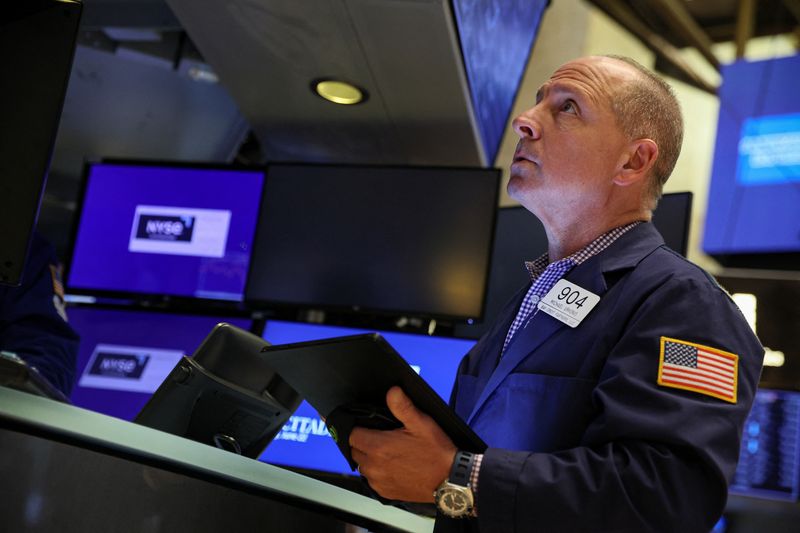By Stephen Culp
NEW YORK (Reuters) - Wall Street ended the session lower on Thursday, crossing the finish line of a grim month and quarter, a dismal coda to the S&P 500's worst first half in more than half a century.
All three major U.S. stock indexes finished the month and the second quarter in negative territory, with the S&P 500 notching its steepest first-half percentage drop since 1970.
The Nasdaq had its largest-ever January-June percentage drop, while the Dow suffered its biggest first-half percentage plunge since 1962.
All three indexes posted their second straight quarterly declines. The last time that happened was in 2015 for the S&P and the Dow, and 2016 for the Nasdaq.
The year began with spiking cases of COVID-19 due to the Omicron variant. Then came Russia's invasion of Ukraine, decades-high inflation and aggressive interest rate hikes from the Federal Reserve, which have stoked fears of a possible recession.
"All year it’s been a tug-of-war between inflation and slowing growth, balancing tightening financial conditions to address inflation concerns but trying to avoid outright panic," said Paul Kim, chief executive officer at Simplify ETFs in New York. "I think we are more than likely already in a recession and right now the only question is how harsh will the recession be?"
"I think it’s very unlikely that we’ll see a soft landing," Kim added.
Economic data released on Thursday did little to allay those fears. Disposable income inched lower, consumer spending decelerated, inflation remained hot and jobless claims inched higher.
"We’ve started to see a slowdown in consumer spending," Said Oliver Pursche, senior vice president at Wealthspire Advisors, in New York. "And it seems that inflation is taking its toll on the average consumer and that translates to corporate earnings which is what ultimately drives the stock market."
The graphic below shows year-on-year growth of core inflation indicators, all of which suggest that while a peak appears to have been reached in March, they all continue to soar well above the Fed's average annual 2% target:
Graphic: Inflation - https://graphics.reuters.com/USA-STOCKS/egvbkgwxypq/inflation.png
According to preliminary data, the S&P 500 lost 32.58 points, or 0.85%, to end at 3,786.25 points, while the Nasdaq Composite lost 146.95 points, or 1.31%, to 11,030.95. The Dow Jones Industrial Average fell 219.61 points, or 0.71%, to 30,809.70.
Of the 11 major sectors in the S&P 500, energy is only one showing a year-to-date gain, aided by crude prices spiking over supply concerns due to Russia-Ukraine conflict. [O/R]
The major stock indexes showed monthly losses, with the S&P 500 logging its largest June percentage decline since the financial crisis.
Second-quarter reporting season begins in several weeks, and 130 of the companies in the S&P 500 have pre-announced. Of those, 45 have been positive and 77 have been negative, resulting in a negative/positive ratio of 1.7 stronger than the first quarter but weaker than a year ago, according to Refinitiv data.

Worries over inflation dampening consumer demand and threatening profit margins will have market participants listening closely to forward guidance.
Shares of Walgreens Boots Alliance (NASDAQ:WBA) Inc fell after its quarterly profit plunged 76%, hurt by its opioid settlement with Florida and a decrease in U.S. pharmacy sales on waning demand for COVID-19 vaccinations.